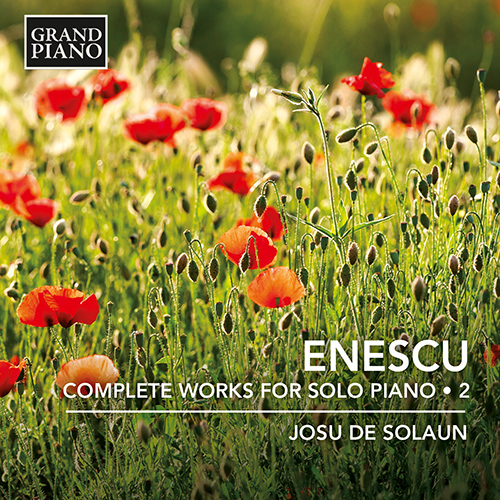
About this Release
“Enescu’s Third Piano Sonata is a landmark in the history of writing for the piano. Its sheer inventiveness and enormous range of expression, from the boisterously rustic and joyful, to the utmost tragedy, from the bawdy and witty, to a sense of fragmentation akin to madness, it is a gift to all pianists from one of the most fertile imaginations of all times. No wonder it has been in the repertoire of many great pianists, such as Dinu Lipatti. The Suite in D Major, as well, stands as one of the great 20th century works for the instrument, a real treasury of both pianistic sumptuosness and bittersweet nostalgia.” — Josu De Solaun
ENESCU, GEORGE (1881–1955)
Complete Works for Solo Piano • 2
- Josu De Solaun, piano
The four works in this second of three volumes devoted to Enescu’s piano music range over a period of more than 30 years. The earliest is the joyful, ebullient Suite ‘Des cloches sonores’, Op. 10 which covers a wide expressive range including use of the melancholy Romanian song, the doina. The Piano Sonata No. 3, Op. 24 is a mercurial, puckish work, both spirited and contemplative, and the Pièce sur le nom de Fauré is a charming souvenir from one composer to another.
This recording was made on a modern instrument: Shigeru Kawai
Tracklist
|
Suite No. 2 in D Major, Op. 10 (1903) (00:25:00 )
|
|
1
I. Toccata: Majestueusement, mais pas trop lent (00:04:25)
|
|
2
II. Sarabande: Noblement (00:08:17)
|
|
3
III. Pavane: Lentement berce (00:06:26)
|
|
4
IV. Bourée: Vivement (00:06:04)
|
|
Prélude and Fugue (1903) (00:15:10 )
|
|
5
Prélude (00:08:26)
|
|
6
Fugue (00:05:32)
|
|
Piano Sonata No. 3 in D Major, Op. 24, No. 3 (1935) (00:17:00 )
|
|
7
I. Vivace con brio (00:06:11)
|
|
8
II. Andantino cantabile (00:10:44)
|
|
9
III. Allegro con spirito (00:08:50)
|
|
10
Pièce sur le nom de Fauré (1922) (00:02:17)
|
The Artist(s)
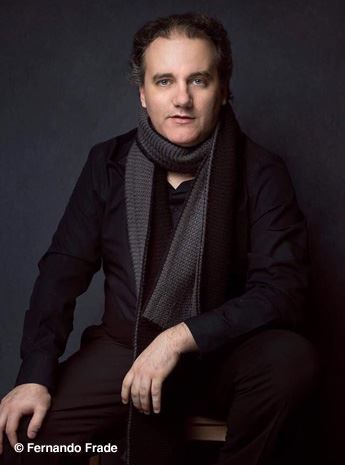
Pianist Josu De Solaun is the First Prize winner of the XIII George Enescu International Piano Competition in Bucharest (previous winners include the legendary pianists Radu Lupu and Elisabeth Leonskaja) and the XV José Iturbi International Piano Competition. He has been invited to perform in distinguished concert series throughout the world, having made notable appearances in Bucharest (Romanian Athenaeum), St Petersburg (Mariinsky Theatre), Washington DC (Kennedy Center), New York (Carnegie Hall, Metropolitan Opera), London (Southbank Centre), Paris (Salle Cortot), Mexico City (Sala Silvestre Revueltas), and all major cities of Spain.
www.josudesolaun.com
The Composer(s)
 In the vast Eastern European diaspora of 20th Century music, few composers can claim the audacity and originality of George Enescu. Enescu was barely in his teens when he commanded the attention of Europe’s musical aristocracy as a virtuoso violinist. In 1895 he entered the Paris Conservatory, where he cultivated his compositional gifts as a student of Fauré and Massenet, astounding all who knew him with his consummate virtuosity at the piano, cello, and organ as well. For nearly a half century the name Enescu was on the lips of every major concert artist. Among them were his classmate at the Conservatoire, Alfred Cortot, his godson Dinu Lipatti; Gustav Mahler, his student Yehudi Menuhin, David Oistrakh, and Clara Haskil, to name only a few.
In the vast Eastern European diaspora of 20th Century music, few composers can claim the audacity and originality of George Enescu. Enescu was barely in his teens when he commanded the attention of Europe’s musical aristocracy as a virtuoso violinist. In 1895 he entered the Paris Conservatory, where he cultivated his compositional gifts as a student of Fauré and Massenet, astounding all who knew him with his consummate virtuosity at the piano, cello, and organ as well. For nearly a half century the name Enescu was on the lips of every major concert artist. Among them were his classmate at the Conservatoire, Alfred Cortot, his godson Dinu Lipatti; Gustav Mahler, his student Yehudi Menuhin, David Oistrakh, and Clara Haskil, to name only a few. Reviews

“…whether because of the unusual programme or the superb interpretations offered by Solaun, we are faced with a collection of music that needs to be listened to, an essential album that promises to delight even the most demanding music lover.” – Melómano (Spain)

“Full recommendation for these completely outstanding albums, thanks to the indisputable merit of a communicator who is so thoroughly engaged with the music he plays.” – Scherzo

“[…] Josu de Solaun makes a seriously persuasive case for the varied and absorbing piano music in these three discs. […] De Solaun never makes heavy weather of Enescu’s demanding writing, but lets expression lead at all times, no matter how intense the virtuosity. There’s a bouncy vitality to his playing, a warm and intimate approach to phrasing and beautifully mellow tone quality.” – BBC Music Magazine
“De Solaun is a wonderful pianist, especially in the colorful worlds of the Second Piano Suite. ” – American Record Guide
“The American-trained Spanish winner of both the Enescu and Iturbi International Piano Competitions, Josu De Solaun, will certainly make you shake your head in disbelief in the disc’s opening work, and throughout his technical brilliance is remarkable.” – David’s Review Corner

“Luckily, there are records, and pianists like Josu de Solaun and record labels like Grand Piano wanting to make known these treasures. Although I have not yet had the opportunity to hear the first volume of this integral, these two are of a level such that they deserve to be considered a reference in this repertoire.” – Ritmo

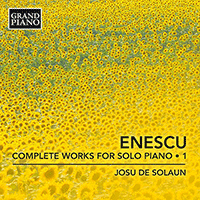
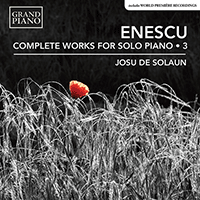
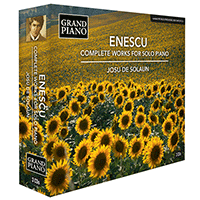
 Grand Piano has gained a reputation for producing high quality recordings of rare keyboard gems. Dedicated to the exploration of undiscovered piano repertoire, the label specialises in complete cycles of piano works by many lesser-known composers, whose output might otherwise have remained unknown and unrecorded.
Grand Piano has gained a reputation for producing high quality recordings of rare keyboard gems. Dedicated to the exploration of undiscovered piano repertoire, the label specialises in complete cycles of piano works by many lesser-known composers, whose output might otherwise have remained unknown and unrecorded.






